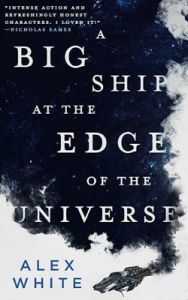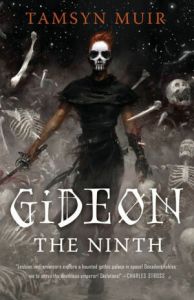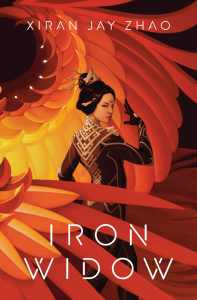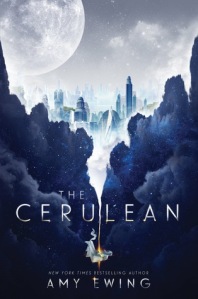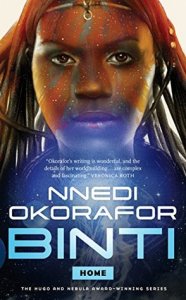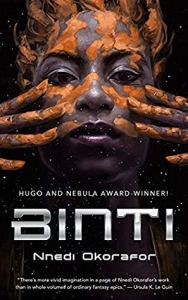Title: A Big Ship at the Edge of the Universe
Series: The Salvagers #1
Author: Alex White
Genre: Science Fantasy
Trigger Warnings: Death (major), blood (major), gore, violence, injury, guns, grief, genocide, war (in the past), betrayal, sexual content (off-page), romantic partner death (in past), murder
Back Cover:
A crew of outcasts tries to find a legendary ship before it falls into the hands of those who would use it as a weapon in this science fiction adventure series for fans of The Expanse and Firefly.
A washed-up treasure hunter, a hotshot racer, and a deadly secret society.
They’re all on a race against time to hunt down the greatest warship ever built. Some think the ship is lost forever, some think it’s been destroyed, and some think it’s only a legend, but one thing’s for certain: whoever finds it will hold the fate of the universe in their hands. And treasure that valuable can never stay hidden for long …
Review:
This is the first novel I’ve read in print format in at least two years. I have read a few physical books and ebooks in that time, but they were all nonfiction or short story collections. Every novel has been an audiobook until this one. And as someone who used to keep a stack of books literally as talk as my waist next to my favorite childhood reading chair and spend hours reading up to seven physical books per week, it’s an absolutely bizarre experience to discover that hard copies in my hand just aren’t as immersive as audiobooks. So I’ll admit that I struggled a lot with this book, largely because of the format.
But that wasn’t the only reason A Big Ship at the Edge of the Universe and I had a rough beginning. I’m a lover of speculative fiction, but I’ve always leaned more towards the fantasy side. I have found some really good scifi, especially recently, but cool scifi stuff isn’t enough to keep me interested – I need plot and characters and other stuff to get immersed in. And this book starts off really slow. The “finding a legendary ship” thing is a catalyst for part of the beginning, but it doesn’t really kick in until the middle. I was going to say that the beginning is setup, but it really isn’t. The beginning has stuff happening, just without much of a real focus.
This story has two protagonist: Boots (the washed-up treasure hunter) and Nylah (the hotshot racer). Boots is angry and rude and mean, but I didn’t mind her all that much. She’s not someone I would like to spend time with in real life, but she was fine as a character. Nylah, though, started the book as the kind of cocky, punchable asshole that I really, really hate in real life and in books. She got some character growth earlier on that helped, and she was incredibly powerful, so by the end I didn’t mind her, but the beginning was difficult. There’s also a host of other characters, including a spaceship crew who definitely get enough page time and development to be called secondary protagonists, but who I don’t really have much to say about. They’re all good, don’t get me wrong – I don’t think there’s a single weak or badly-done character in this book – but there’s nothing to say about them that could add to this review.
The world was an interesting fusion of scifi and magic. It’s your classic spacefaring, mutli-planet, fancy tech, faster-than-light spaceship travel kind of intergalactic science fiction world, but also a world where almost everyone has some type of magic and magic can be used to fuse with, alter, power, and enhance technology as well as just doing straight magic stuff. And the fusion was great. It was cool seeing cybersecurity as a psychic battle between people with tech magic and an evolving AI defense system. It made for some badass fight scenes. And really, it gave my fantasy-loving side something to really enjoy in this otherwise fairly ordinary scifi world and made the whole thing that much better.
Now, you might get this far and think, So this is a pretty solidly okay book, right? And you’d be wrong. This is a really, really good book. And the reason is because somewhere in the middle, the whole “hunting the legendary missing ship” thing finally kicks in. And I loved it. When it starts, the reasons for wanting to find the ship are small – Boots is trying to save her own skin, the rest of the crew wants a payday, and Nylah didn’t even want to be involved but got dragged along for the ride. But as they journey across the universe, exploring massive and unsettling abandoned places (my favorite) and getting chased by an unbelievably powerful assassin, they begin to put together a deadly conspiracy with its roots in a genocidal war decades earlier and its culmination fast approaching. It was thrilling, engaging, and brilliant, plenty of scenes with the absurdly powerful protagonist trope that I adore … I loved it deeply and read it in two sittings. Whatever else my criticisms of the book, once the plot got rolling it really got rolling.
Is A Big Ship at the Edge of the Universe perfect? Definitely not. And there’s some things that I just didn’t like about it (e.g. Nylah at the beginning) that other readers may not find irritating or may even like. But the details are great, the world is pretty neat, and once the plot gets going it’s absolutely fantastic. On the whole it’s a very good book. But I don’t intend to read the rest of the series. Part of that is because everything seems to imply that the rest of the series is focused on dealing with the rest of the people involved in the big conspiracy, and that just sounds less interesting to me. And part of it is because this book wrapped up really well. There’s definitely room for a sequel, but it doesn’t feel like it requires one. It was a good, satisfying adventure, and I feel no need to read on.
The Salvagers series:
- A Big Ship at the Edge of the Universe
- A Bad Deal for the Whole Galaxy
- The Worst of All Possible Worlds

